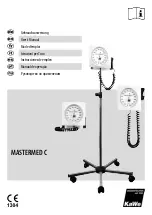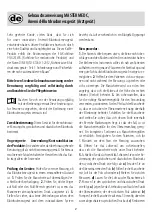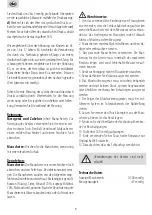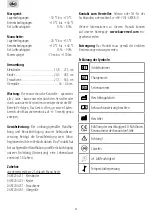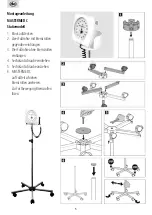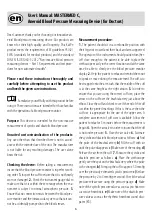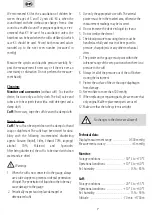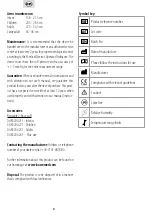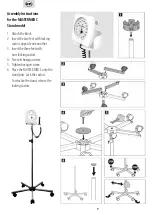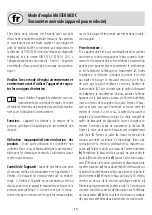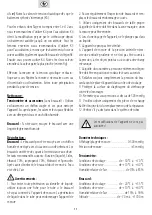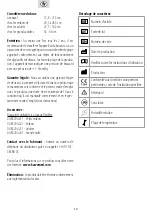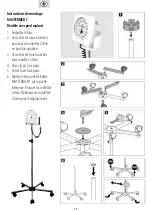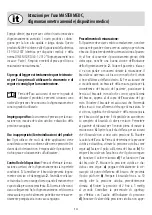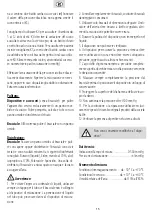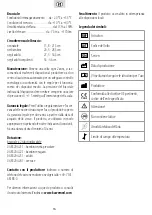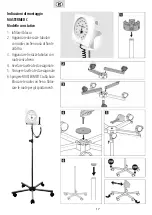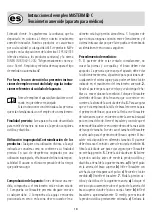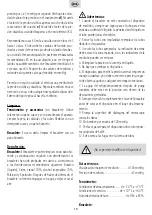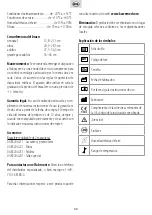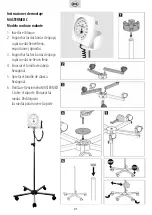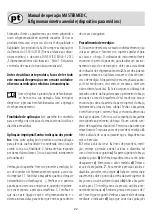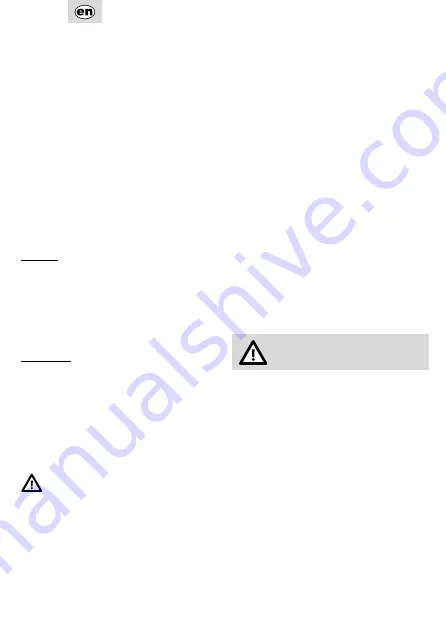
7
We recommend K4 for the auscultation of children be-
tween the ages of 3 and 12 years old. K4 is when the
sound heard with the stethoscope changes from a clear
sound to a muffled sound. For pregnant patients, we rec-
ommend that K5 be used for auscultation unless the
heartbeat can be heard when the cuff is deflated, in which
case K4 should be used. Record both measured values
rounded up to the next even number (measured in
mmHg).
Measure the systolic and diastolic pressure carefully. Re-
peat the measurement if necessary or if there is ever an
uncertainty or distraction. Do not perform the measure-
ment hastily.
Cleaning:
Monitor and accessories
(without cuff): To clean the
device, first use only a soft dry cloth. The ball, valve and
tubes are to be wiped clean with a mild detergent and a
damp cloth.
Cuff:
If necessary, wipe the cuff clean with a damp cloth.
Disinfection:
Cuff:
The cuff can be wiped clean with a damp cloth and
soap or disinfectant. The cuffs have been tested for dura-
bility with the following recommended disinfecting
agents: Buraton (liquid), Cidex, Ethanol 70%, isopropyl
alcohol 70%, Mikrozid and Sporicidin.
After being disinfected, the cuff is to be rinsed with clean
water and air-dried.
Warnings:
1. When the cuff is not connected to the gauge, always
use a tube stopper to prevent accidental penetration
of liquid. The penetration of liquid into the tube may
cause damage to the gauge.
2. Periodically inspect and replace damaged or
deteriorated cuffs.
3. Use only the appropriate size cuffs. The arterial
pointer must be in the marked area, otherwise the
measurement readings may be incorrect.
4. Do not immerse the device in liquid to clean it.
5. Do not sterilize the device!
6. The blood pressure measuring device must be
handled carefully and must not be exposed to
pressure, sharp objects or any other mechanical
stress.
7. The pointer on the gauge must point within the
tolerance range of the zero position when there is no
pressure in the cuff.
8. Always let all of the pressure out of the cuff before
storing the instrument.
9. Protect the surface of the stethoscope diaphragm
from damage.
10. Never inflate to more than 300 mmHg.
11. When replacing or repairing parts, please ensure that
only original KaWe replacement parts are used.
12. Make sure that the tube system is airtight.
No changes to the device are allowed!
Technical data:
Display/measurement range: ..................... 0-300 mmHg
Measurement accuracy: ................................... ±3 mmHg
Monitor:
Storage conditions: ............................... - 30 °C to +70 °C
Operational conditions: ....................... +10 °C to +40 °C
Rel. humidity: ................................................. 15% - 85%
Cuff:
Storage conditions: ............................... - 20 °C to +55 °C
Operational conditions: ....................... +10 °C to +40 °C
Rel. humidity: ................................................. 15% - 90%
Altitude: .............................................. -70 m to +1700m
Summary of Contents for Mastermed C
Page 26: ...26 KaWe KaWe G93 42 EWG DINENISO81060 1 2012 1 1 2 MASTERMED C a 3 co 1 2 3 5 4 5 6 7 30...
Page 29: ...29 MASTERMEDC 1 2 3 4 5 6 MASTERMEDC...
Page 30: ...30...
Page 31: ...31...

